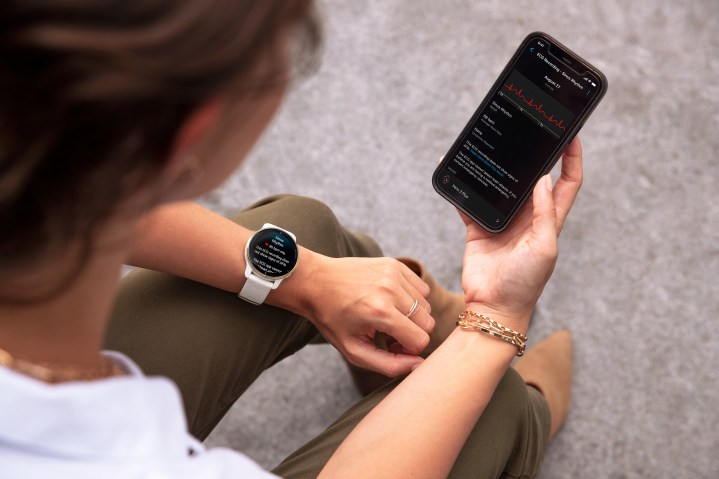Garmin has announced a new ECG app for AFibVenu 2 Plus smartwatch users. This app is cleared by the U. S. Food and Drug Administration (FDA) and allows anyone with the Venu 2 Plus to record their heart rhythm and check for possible signs of atrial fibrillation (AFib) — making it the first Garmin wearable capable of ECG and AFib tracking. With the ECG app, users can record a 30-second ECG and then view the results immediately on the watch itself or save it for later in the Garmin Connect app.
“The ECG App is Garmin’s first FDA-cleared smartwatch feature, and we are thrilled to offer this revolutionary tool to our customers as another way to stay on top of their health,” said Dan Bartel, Garmin vice president of global consumer sales. “During the early stages of AFib, it’s common for symptoms to be infrequent, making it difficult to detect in a clinical setting. With the new ECG App, Venu 2 Plus customers can conveniently take an ECG recording anytime and optionally create a report of their results to share with their doctor later.”

So, how does the new Garmin ECG app work? When you take an ECG through the app, it will communicate with the Venu 2 Plus to use the watch’s sensors, which will record the electrical signals that control how the user’s heart beats. Then it will analyze that 30-second recording to detect if there are any signs of AFib. Results can be synced directly with the Garmin Connect app on your phone, which is also where users can view their own history of ECG results and create reports to share with health care providers.
The ECG app is only available for Venu 2 Plus users in the U.S. It also requires the most up-to-date version of the Garmin Connect app. However, Garmin does have plans to expand the product support for the ECG app, as well as launch it in more regions with proper regulatory approval.

When the ECG app launches, it will only work with the Venu 2 Plus smartwatch, which originally came out in early 2022. ECG and AFib detection aren’t anything new when it comes to smartwatches and fitness trackers (the Apple Watch has offered it for years), but regardless, it’s nice to see Garmin dip its toes in these waters and make its hardware more useful.
In addition to the new ECG app and AFib tracking, the Venu 2 Plus also offers all-day activity and stress tracking, as well as nine days of battery life, and can show notifications from your connected phone. To learn more, check out our Garmin Venu 2 Plus review.


